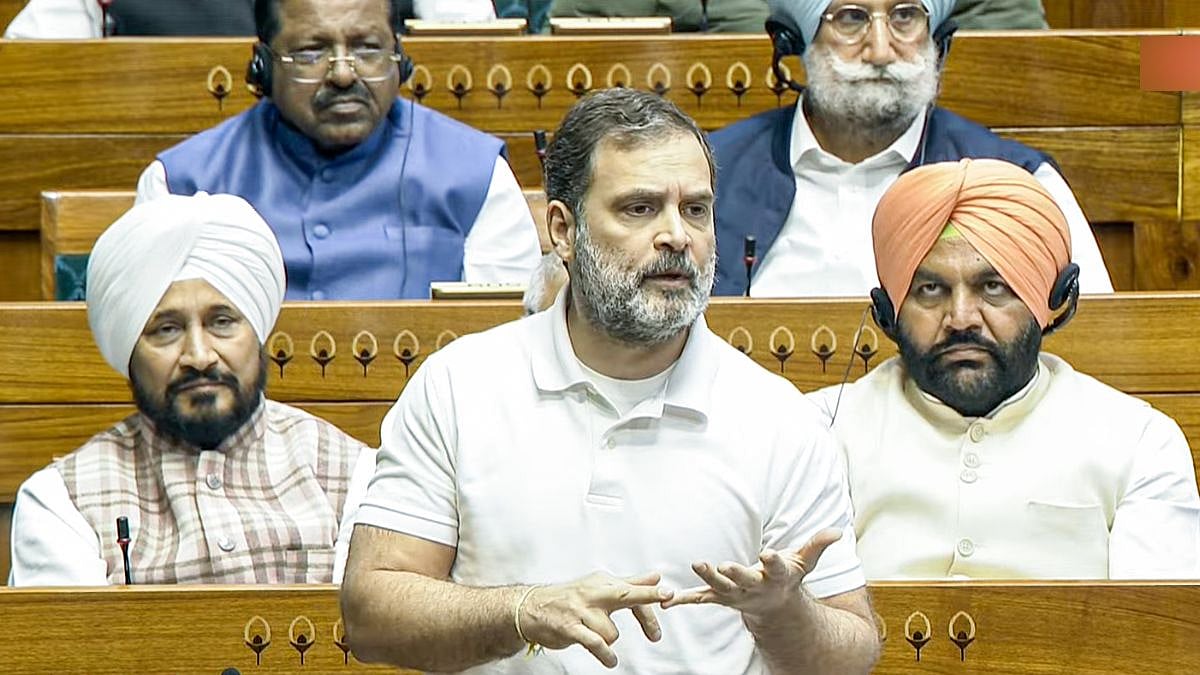For nearly two decades, the BJP’s master strategists systematically crafted and reinforced the “Pappu” narrative to caricature Rahul Gandhi, undermining his political ascent. However, the tide turned dramatically in 2024 with his transformative Bharat Jodo Yatra—a 4,080 km march from Kanyakumari to Jammu & Kashmir over 150 days, traversing 14 states and 85 districts. This journey reshaped his public persona from a ridiculed political figure to a serious contender, culminating in his elevation as Leader of the Opposition in Parliament. His recent speech on the Motion of Thanks to the President’s Address further reinforced his new image, brimming with sharp critique, mature analysis, and policy alternatives.
A Scathing Indictment of Economic Policies
In his latest address to the Lok Sabha, Rahul Gandhi launched a frontal attack on the government’s economic policies, particularly exposing the structural failures of the ‘Make in India’ initiative and India’s over-reliance on Chinese imports. Experts say that Gandhi could drive home a strong point that far from making India a global manufacturing hub, the policy had faltered, leaving the country dependent on foreign, and particularly Chinese, supply chains. This, he systematically zeroed in the point that it had not only eroded India’s industrial self-sufficiency but also posed a direct threat to national security.
Chinese Imports: An Economic and Security Challenge
One of the central themes of Rahul Gandhi’s speech was India’s growing trade imbalance with China. He tried tio prove his contention with the help of data and dwelt upon the border tensions and geopolitical hostilities, India’s import bill for Chinese goods had surged, deepening economic vulnerabilities. By outsourcing key industrial and technological dependencies to a nation with whom India has persistent territorial disputes, he cautioned that the government had compromised both economic sovereignty and national security.
Gandhi’s argument underscored the contradiction in the government’s stance—on one hand, promoting Atmanirbhar Bharat (self-reliant India), while on the other, allowing an exponential rise in imports from its primary strategic adversary. His assertion was backed by figures highlighting the widening trade deficit, raising serious questions about the efficacy of India’s industrial and trade policies.
Make in India: A Vision Unfulfilled
Lambasting the ‘Make in India’ program, Rahul Gandhi called it a grand but hollow slogan that had failed to materialize into real industrial growth. He pointed out that despite the hype surrounding this flagship initiative, India’s manufacturing sector remained sluggish, foreign direct investment (FDI) in core industries had not met expectations, and job creation had suffered. The absence of a robust industrial framework had forced India to remain an importer rather than an exporter of finished goods, exacerbating economic disparities.
He linked this failure to the weakening of small and medium enterprises (SMEs), which are the backbone of any thriving manufacturing economy. By prioritizing policies that benefited crony capitalists while neglecting grassroots entrepreneurs, the government had further deepened economic distress, he alleged.
Sharp Criticism of the President’s Address
Rahul Gandhi also took aim at the President’s Address to Parliament, describing it as a “laundry list” of past claims rather than a vision for the future. He argued that the speech failed to acknowledge critical issues such as unemployment, rising economic inequality, and, most importantly, the pressing national security concerns arising from China’s incursions into Indian Territory. Ghandi came heavily on the government’s refusal to acknowledge these ground realities amounted to misleading the nation. He contended that true leadership requires confronting challenges head-on rather than indulging in self-congratulatory rhetoric.
Chinese Incursions: A Fact, Not a Fiction
In one of the most striking segments of his speech, Rahul Gandhi directly addressed the issue of Chinese military presence on Indian soil. He cited statements made by India’s own Chief of Army Staff to substantiate his claim that Chinese troops had occupied Indian Territory—a fact that, he argued, the government was unwilling to publicly admit.
His remarks were aimed at drawing attention to what he perceived as the government’s failure in handling border security and its reluctance to hold China accountable. He further linked this to the broader economic discourse, arguing that India’s dependence on Chinese goods had weakened its strategic leverage.
Advocacy for a Stronger U.S.-India Alliance
Gandhi did not merely highlight problems; he also proposed solutions. He advocated for a stronger strategic partnership with the United States, particularly in industrial and technological collaborations. In hismopinion,a deeper engagement with the U.S. could accelerate India’s self-reliance in defense production and high-tech industries, reducing its vulnerability to Chinese economic coercion.
By focusing on industrial cooperation, joint research and development, and military partnerships, he emphasized that India could counterbalance China’s influence and enhance its geopolitical standing. His vision for Indo-U.S. cooperation aligns with broader global trends where nations are seeking to diversify supply chains and reduce dependency on adversarial powers.
Conclusion: A New Political Contender Emerges
Rahul Gandhi’s Lok Sabha extempore speech was a defining moment, marking his transition from a sporadic critic to a serious policy challenger. By weaving economic policy with national security concerns, he presented a narrative that went beyond partisan attacks. His articulation of India’s economic vulnerabilities and strategic weaknesses was aimed at positioning himself as a credible alternative to the ruling dispensation.
The impact of his speech will ultimately depend on how the government responds. If dismissed as mere rhetoric, the issues he raised will continue to simmer in public discourse. However, if his critiques gain traction, they could reshape the policy debates leading up to the next general elections.
One thing is certain: the BJP’s carefully cultivated “Pappu” image of Rahul Gandhi has crumbled. In its place stands a Leader of the Opposition who is determined to set the terms of the political debate—and that in itself signals a new phase in India’s political landscape.
(Writer is senior political analyst and strategic affairs columnist)
